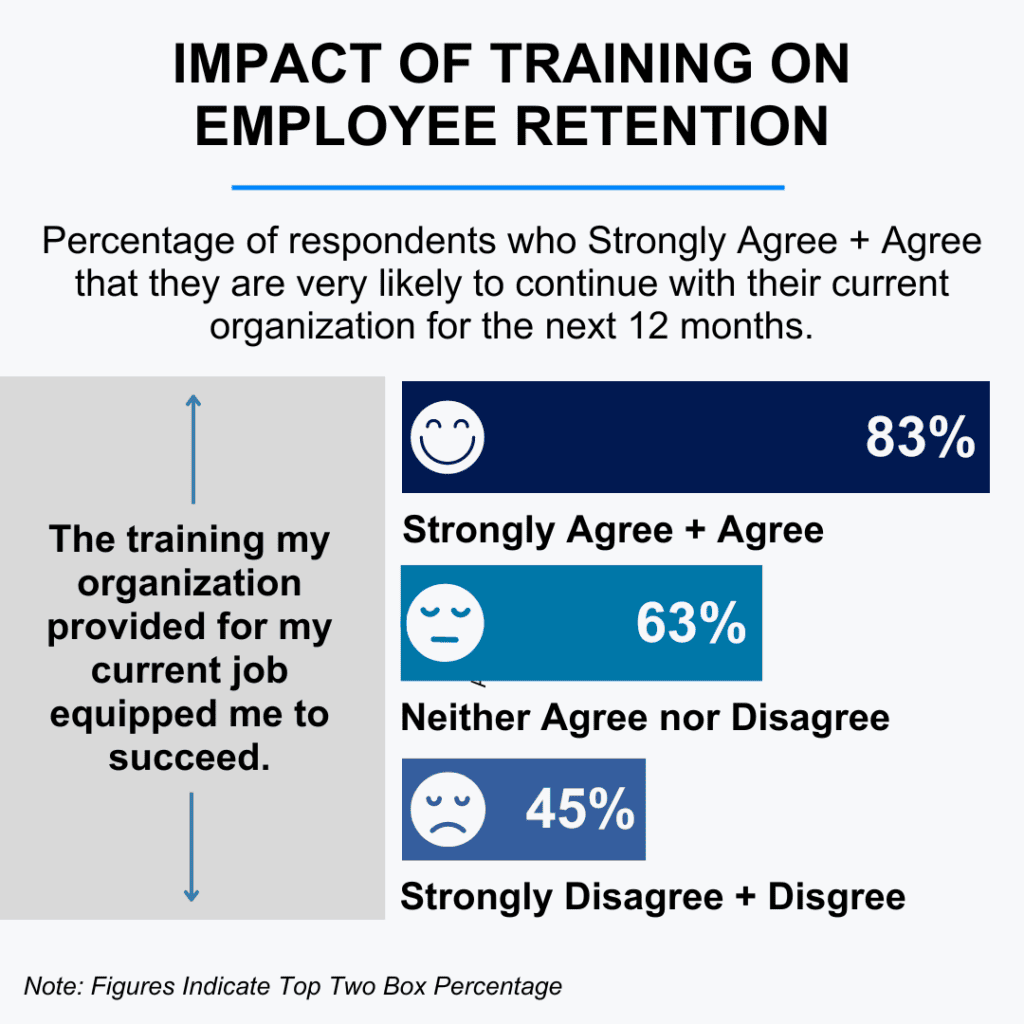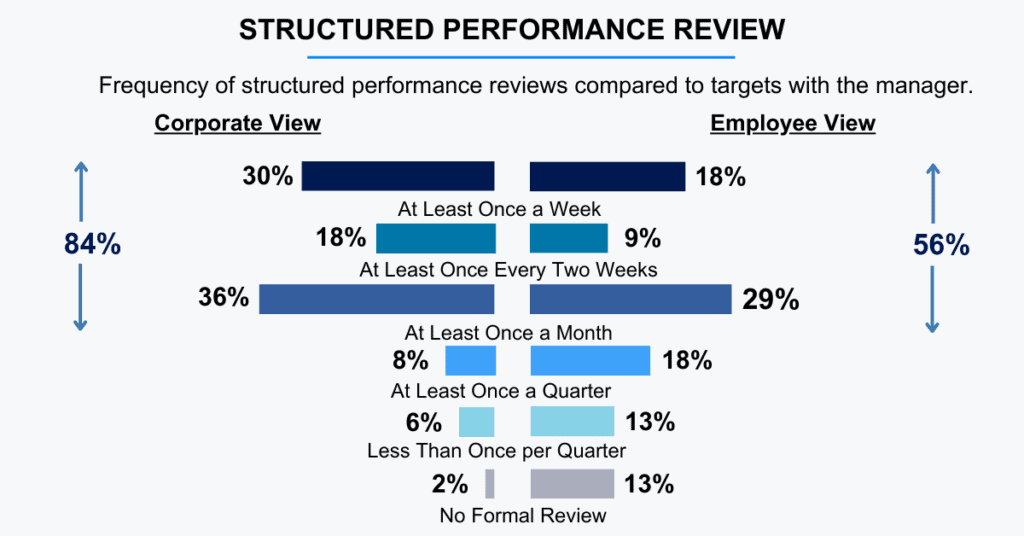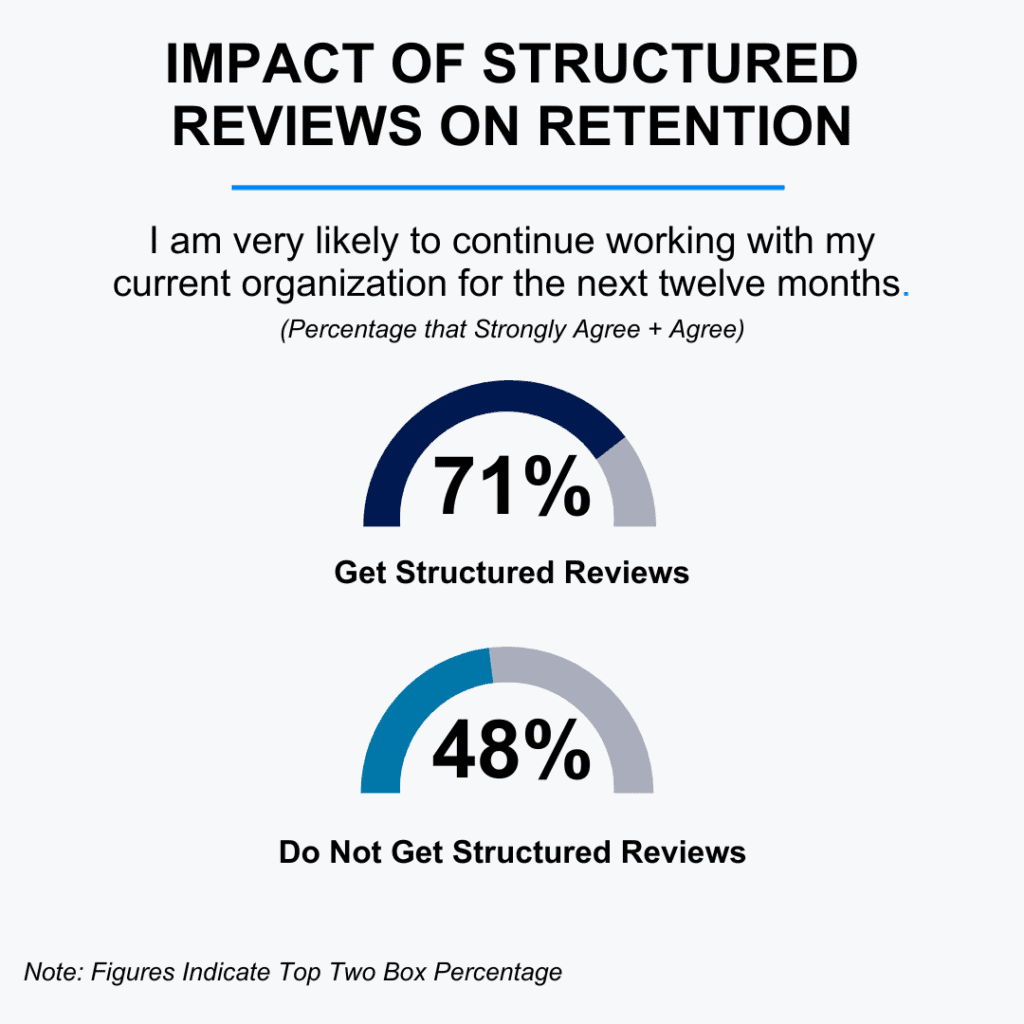
April 4, 2024
Training and development are more than just routine aspects of contact center operations; they’re critical components of an effective employee retention strategy. However, the scope and impact of training and development initiatives vary across organizations.
Some focus solely on onboarding new staff, while others extend their efforts to provide ongoing training. A select few contact centers take it a step further, embedding structured performance reviews and comprehensive development programs into their culture. These proactive measures significantly boost the likelihood that employees will choose to stay with the organization long-term.
Throughout this article, we’ll draw on findings from the following research reports to uncover how training and development can be effectively harnessed to retain top talent.
- COPC Inc. Global Benchmarking Series, Contact Center People Management & Employee Experience
- COPC Inc. Employee Engagement Research, Global Report
COPC® High-Performance Management Techniques Training
Supercharge your frontline management
with powerful knowledge and skills!

Improving Training and Development Programs
Training and development often don’t get as much attention as other performance measures like service level, quality, or customer satisfaction. Ironically, the success of these metrics is directly influenced by how effective training and development are.
New hires value initial training, so doing a good job is essential. This chart shows that frontline employees felt the training provided equipped them for success in their current position.
Often, organizations use overall attrition rates to measure retention, but this measurement masks the impact of those who leave early in their tenure. Poor hiring and training cause people to leave quickly.
New Hire Training
New hires value initial training, so doing a good job is essential. The chart below shows that frontline employees felt the training provided equipped them for success in their current position. Often, organizations use overall attrition rates to measure retention, but this measurement masks the impact of those who leave early in their tenure. Poor hiring and training cause people to leave quickly.

The connection is evident:
- 83% of new hires who felt their training effectively prepared them for success were very likely to stay with their organization for the next year.
- However, for those who were neutral about the quality of their training, the likelihood of staying dropped by 20 points to 63%.
- If new hires considered their training poor, indicating they disagreed or strongly disagreed with its effectiveness, only 45% intended to remain with the company.
These statistics confirm that a solid and effective new hire training program is a key driver of agent retention. In fact, individuals who were content with their training were nearly twice as likely to remain with the company compared to those who were dissatisfied.

Related
Call Center Attrition: Avoid the Dilemma of First-Day Ghosting
Learn from industry experts how to reduce call center attrition. Avoid first-day ghosting and optimize employee retention.
Employee Development
Learning continues after formal training, and ongoing performance reviews are critical to employee development. These reviews typically focus on how well employees meet their KPI goals and their progress in career development. However, frontline staff development through structured performance reviews happens less often than executives think.
The survey reveals a stark contrast between executives’ and employees’ reports on the frequency of performance reviews. While 84% of executives claim that reviews are conducted at least monthly and 92% believe they happen at least quarterly, employees have a different perspective.

Just 56% of staff report receiving monthly structured reviews, and only 74% receive them quarterly. It’s concerning to find that 26% of employees report not receiving any quarterly performance feedback, with an even more troubling 13% not receiving any performance feedback.

These figures starkly highlight the industry’s failure to prioritize ongoing development. This oversight is significant because staff with regular one-on-one reviews are much more inclined to continue working with their organization compared to those who don’t receive such attention.
The chart illustrates that 71% of employees who receive structured reviews intend to remain with their company for at least another year, compared to only 48% of those who do not receive such reviews. These statistics emphasize the importance of regular and frequent structured performance evaluations as a cornerstone of an effective employee retention strategy.
It’s important to note that these one-on-one meetings are also an opportunity for managers to show their support by actively listening to their employees’ feedback and concerns. When carried out effectively, this practice not only boosts performance and minimizes inconsistencies but also plays a crucial role in retaining employees.
Mastering Employee Retention Strategy Through Training
Robust training and development programs are the cornerstone of an agent’s capability to address customer concerns and forge memorable customer interactions. When agents are thoroughly trained and feel supported, their sense of preparedness, value, and confidence in their abilities significantly increases.
This approach not only boosts employee satisfaction but also lays the groundwork for outstanding performance and retention. Implementing such an employee retention strategy is essential for nurturing a dedicated and skilled workforce committed to excellence.
